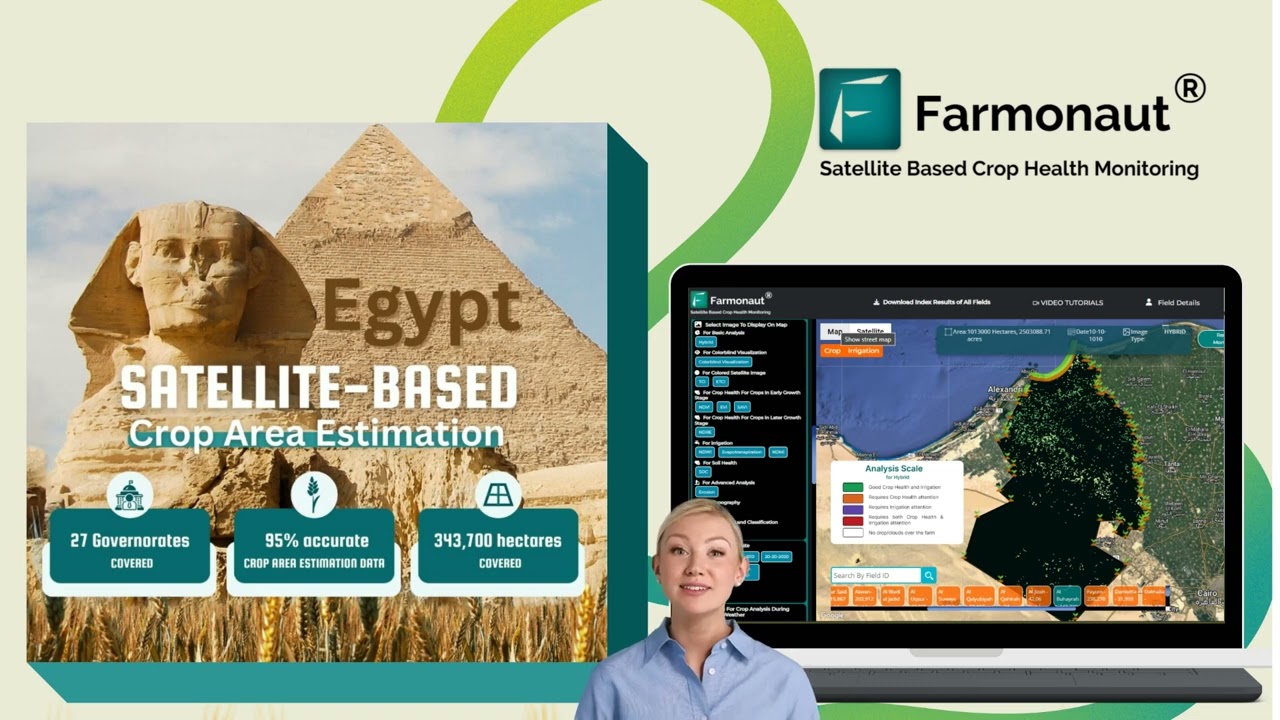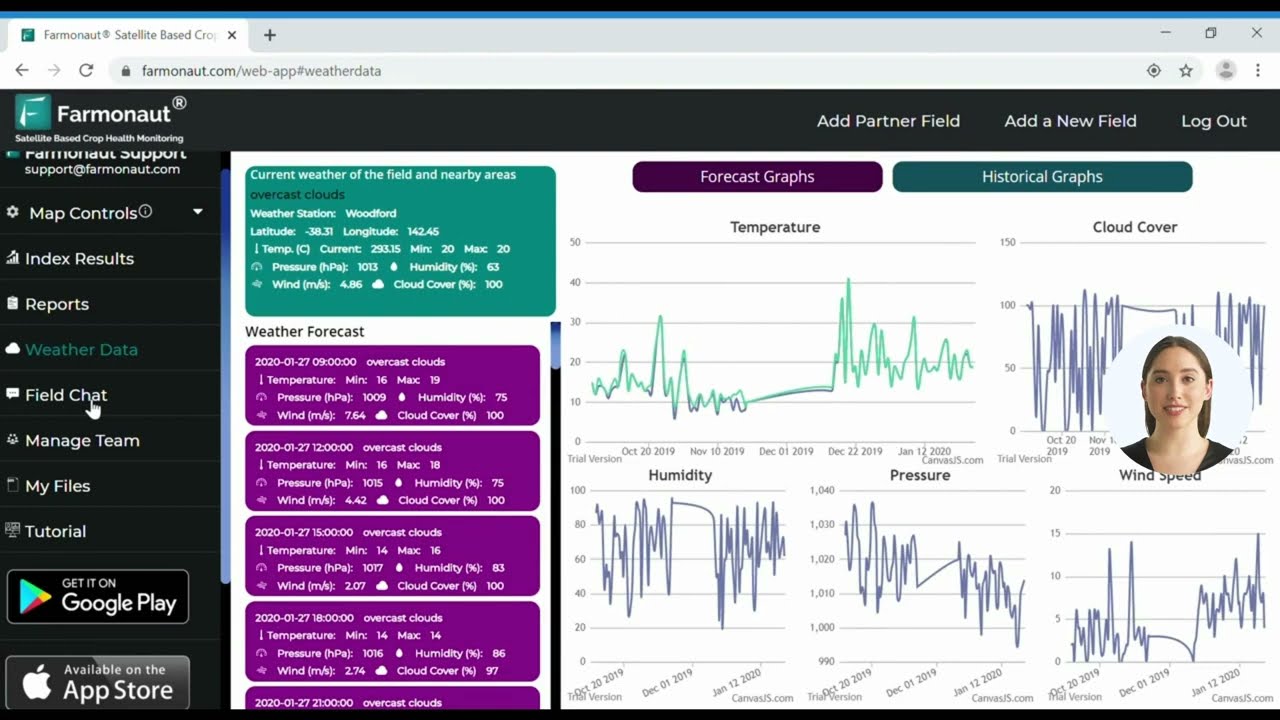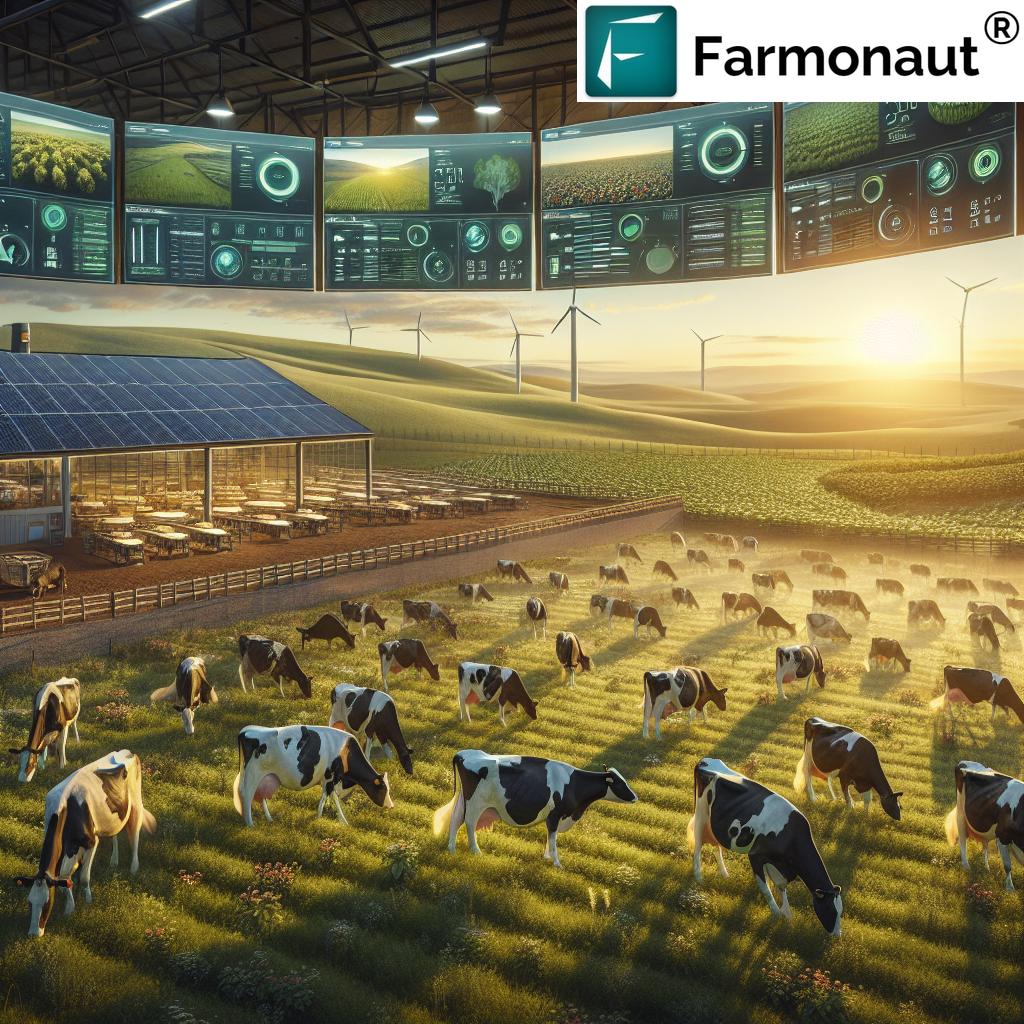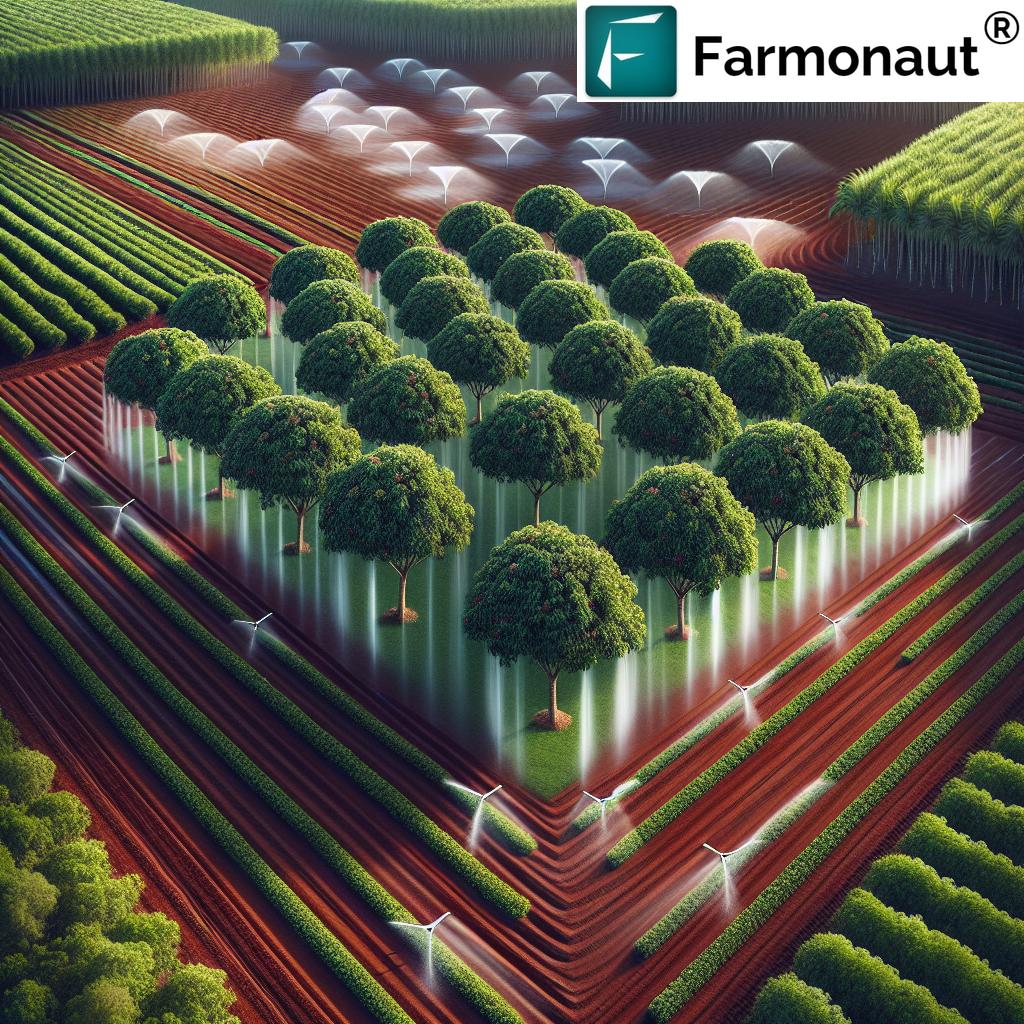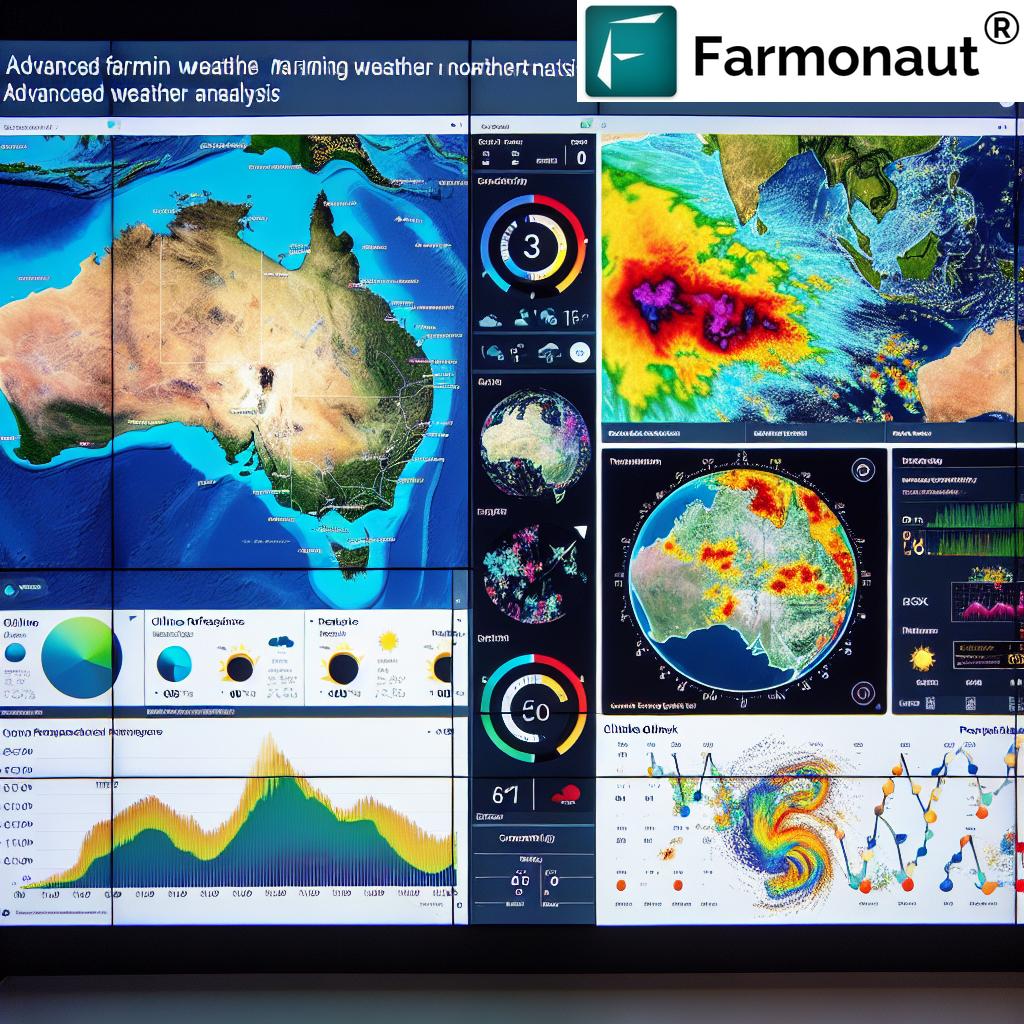Revolutionizing Australian Agriculture: Farmonaut’s Sustainable Farming Insights for Rural Property Investors
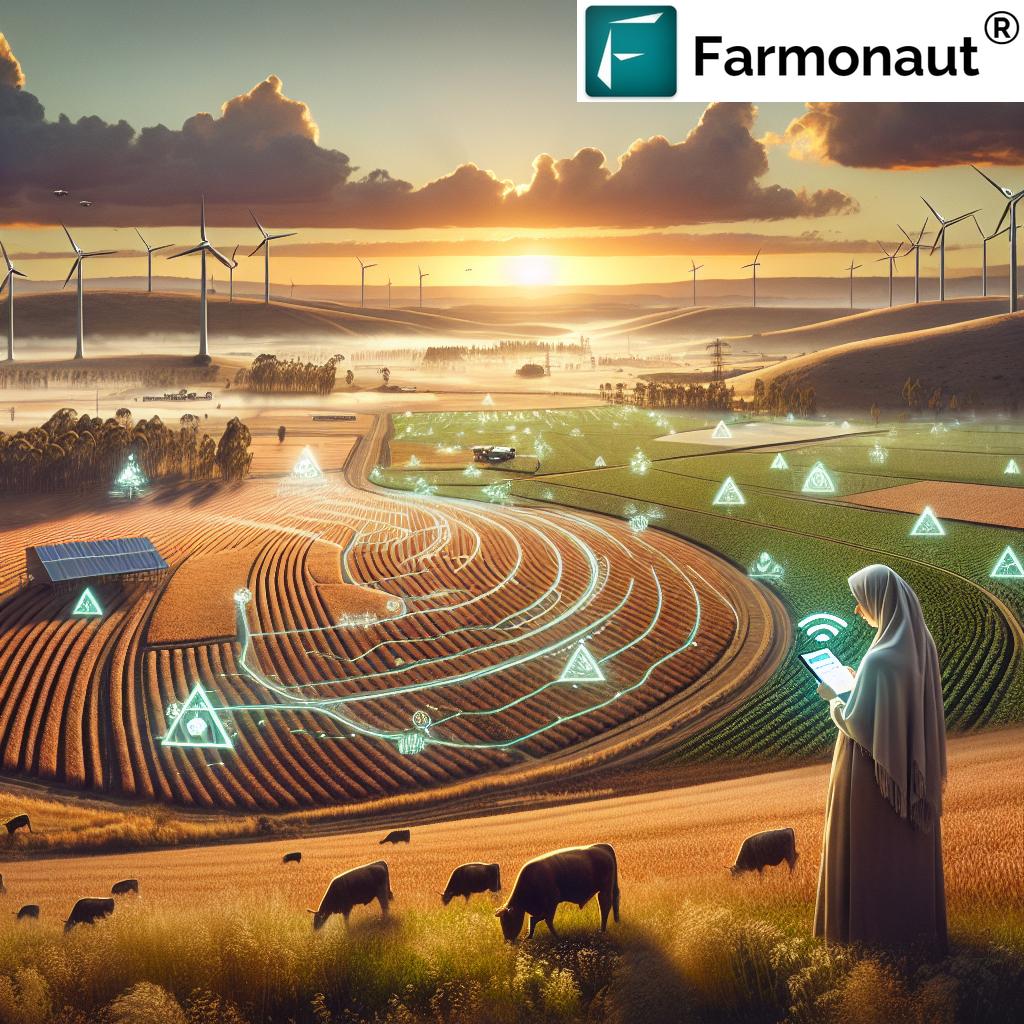
“Farmonaut’s satellite-based crop monitoring solutions can increase farm efficiency by up to 30% through precision agriculture techniques.”
Welcome to the future of Australian agriculture! In this comprehensive guide, we’ll explore how sustainable farming practices and cutting-edge technology are transforming the rural landscape. As we delve into the world of precision agriculture and digital innovations, we’ll uncover valuable insights for rural property investors and farmers alike.
At Farmonaut, we’re at the forefront of this agricultural revolution, offering advanced satellite-based farm management solutions that are changing the game for farmers across Australia and beyond. Our mission is to make precision agriculture accessible and affordable, integrating innovative technology with traditional farming wisdom.
The Evolution of Australian Agriculture
Australian agriculture has come a long way from its humble beginnings. Today, it’s a sophisticated industry that combines centuries-old knowledge with cutting-edge technology. Let’s take a closer look at how sustainable farming practices are reshaping our rural communities and agricultural production.
Embracing Sustainable Farming Practices
Sustainability is no longer just a buzzword; it’s a necessity in modern agriculture. Australian farmers are increasingly adopting practices that not only boost productivity but also protect our precious environmental resources. Here’s how sustainable farming is making a difference:
- Water Conservation: Implementing efficient irrigation systems and water-saving techniques
- Soil Health: Using cover crops and minimal tillage to improve soil structure and fertility
- Biodiversity: Encouraging native flora and fauna to create balanced ecosystems
- Carbon Farming: Adopting practices that sequester carbon and reduce greenhouse gas emissions
These sustainable approaches are not just good for the environment; they’re also proving to be economically beneficial for farmers in the long run.
The Rise of Precision Agriculture
Precision agriculture techniques are revolutionizing the way we farm. By leveraging data and technology, farmers can make more informed decisions, leading to optimized resource use and increased yields. Here’s how precision agriculture is changing the game:
- Satellite Imagery: Using remote sensing to monitor crop health and soil conditions
- GPS-Guided Machinery: Improving accuracy in planting, fertilizing, and harvesting
- Variable Rate Technology: Applying inputs like fertilizers and pesticides precisely where needed
- Soil Mapping: Creating detailed maps of soil types and nutrient levels for targeted management
At Farmonaut, we’re proud to offer cutting-edge satellite-based crop monitoring solutions that bring the power of precision agriculture to farms of all sizes. Our technology helps farmers make data-driven decisions, leading to improved efficiency and sustainability.
Crop Management Solutions for the Modern Farmer
Effective crop management solutions are essential for maximizing yields and ensuring sustainable production. Let’s explore some innovative approaches that are transforming crop management in Australia:
Advanced Crop Monitoring
Gone are the days of relying solely on visual inspections to assess crop health. Today’s farmers have access to sophisticated monitoring tools that provide real-time insights into their fields. Farmonaut’s satellite-based crop monitoring system offers:
- Vegetation Health Analysis: Using NDVI (Normalized Difference Vegetation Index) to assess crop vigor
- Early Stress Detection: Identifying potential issues before they become visible to the naked eye
- Yield Prediction: Estimating crop yields based on historical data and current conditions
- Water Stress Monitoring: Detecting areas of water stress to optimize irrigation
These advanced monitoring capabilities allow farmers to respond quickly to changing conditions, ensuring optimal crop health throughout the growing season.
Integrated Pest Management (IPM)
IPM is a holistic approach to pest control that minimizes the use of chemical pesticides. By combining biological, cultural, and chemical methods, farmers can effectively manage pests while reducing environmental impact. Key components of IPM include:
- Biological Control: Using natural predators to manage pest populations
- Crop Rotation: Disrupting pest lifecycles by changing crop patterns
- Resistant Varieties: Planting crop varieties that are naturally resistant to common pests
- Targeted Application: Using precision technology to apply pesticides only where needed
By adopting IPM strategies, Australian farmers are reducing their reliance on chemical inputs while maintaining high crop yields.
Livestock Management Technology: A New Era for Australian Farmers
The livestock sector is a crucial component of Australian agriculture, and it’s experiencing its own technological revolution. Livestock management technology is helping farmers improve animal welfare, increase productivity, and streamline operations. Here are some key innovations:
Electronic Identification (EID) Systems
EID systems use RFID tags to track individual animals, providing a wealth of data for farmers. Benefits include:
- Improved Traceability: Enhancing food safety and supply chain transparency
- Automated Record-Keeping: Streamlining data collection for breeding, health, and production
- Precision Feeding: Tailoring feed rations to individual animal needs
- Health Monitoring: Early detection of health issues through behavior tracking
Smart Fencing and Grazing Management
Virtual fencing technology is revolutionizing grazing management, offering benefits such as:
- Flexible Pasture Management: Easily adjusting grazing areas without physical fences
- Reduced Labor Costs: Automating the process of moving livestock between paddocks
- Environmental Protection: Keeping livestock away from sensitive areas
- Improved Land Utilization: Optimizing grazing patterns for better pasture health
These technologies are not only improving efficiency but also contributing to more sustainable livestock management practices across Australia.
“Australian farmers adopting sustainable practices have reduced water usage by 25% while maintaining crop yields in the past decade.”
Agricultural Market Insights: Navigating the Global Landscape
Understanding agricultural market insights is crucial for farmers and investors alike. The Australian agricultural sector is deeply connected to global markets, and staying informed about market trends is essential for success. Let’s explore some key factors influencing the market:
Global Demand and Trade Relationships
Australia’s agricultural exports are in high demand worldwide, particularly in Asia. Key insights include:
- Growing Middle Class: Increasing demand for high-quality Australian produce in emerging markets
- Trade Agreements: Opportunities and challenges presented by international trade deals
- Market Diversification: The importance of exploring new markets to mitigate risks
Climate Change and Market Volatility
Climate change is having a significant impact on agricultural production and market stability. Considerations include:
- Extreme Weather Events: Increasing frequency of droughts, floods, and bushfires affecting supply
- Adaptation Strategies: Investing in climate-resilient crops and farming techniques
- Carbon Markets: Emerging opportunities in carbon farming and emissions reduction
At Farmonaut, we provide farmers with up-to-date satellite imagery and analytics, helping them make informed decisions in response to changing market conditions and environmental factors.
Agribusiness Financial Services: Fueling Growth and Innovation
Agribusiness financial services play a crucial role in supporting the growth and sustainability of Australian agriculture. From traditional banking products to innovative fintech solutions, these services are evolving to meet the unique needs of modern farmers. Key aspects include:
Specialized Agricultural Lending
Financial institutions are offering tailored lending products that account for the cyclical nature of farming, including:
- Seasonal Finance: Short-term loans to cover planting and harvesting costs
- Equipment Finance: Flexible options for purchasing or leasing farm machinery
- Land Acquisition Loans: Long-term financing for property purchases and expansions
Risk Management Tools
Managing financial risk is crucial in agriculture. Modern financial services offer:
- Crop Insurance: Protection against yield losses due to weather events or pests
- Forward Contracts: Locking in prices for future crop sales
- Weather Derivatives: Financial instruments to hedge against adverse weather conditions
Farmonaut’s satellite-based crop monitoring can provide valuable data to support these financial services, offering lenders and insurers more accurate information for risk assessment.
Farm Supplies and Equipment: Innovations Driving Efficiency
The latest farm supplies and equipment are transforming agricultural operations, boosting productivity and sustainability. Let’s explore some of the cutting-edge technologies available to Australian farmers:
Precision Farming Equipment
Modern farm machinery is equipped with advanced technology, including:
- GPS-Guided Tractors: Improving accuracy and reducing overlap in field operations
- Variable Rate Applicators: Precisely applying inputs based on soil and crop needs
- Autonomous Vehicles: Reducing labor costs and increasing operational efficiency
Smart Irrigation Systems
Water management is critical in Australian agriculture. Innovative irrigation solutions include:
- Soil Moisture Sensors: Providing real-time data on soil water content
- Weather-Based Controllers: Adjusting irrigation schedules based on local weather conditions
- Drip Irrigation: Maximizing water efficiency by delivering water directly to plant roots
These advanced farm supplies and equipment, when combined with Farmonaut’s satellite-based insights, enable farmers to optimize their operations and resource use.
Digital Farming Innovations: The Future of Agriculture
Digital farming innovations are reshaping the agricultural landscape, offering new ways to monitor, analyze, and manage farm operations. These technologies are making farming more precise, efficient, and sustainable. Key innovations include:
Internet of Things (IoT) in Agriculture
IoT devices are connecting farm equipment, sensors, and management systems, providing unprecedented levels of data and control:
- Smart Sensors: Monitoring soil conditions, weather, and crop health in real-time
- Connected Machinery: Tracking equipment performance and scheduling maintenance
- Automated Systems: Controlling irrigation, climate control, and feeding systems remotely
Big Data and Analytics
The wealth of data generated by modern farms is being harnessed to drive decision-making:
- Predictive Analytics: Forecasting crop yields, pest outbreaks, and market trends
- Machine Learning: Improving crop models and optimizing farm management practices
- Data-Driven Insights: Providing actionable recommendations for farm operations
Farmonaut’s platform integrates seamlessly with these digital farming innovations, offering farmers a comprehensive solution for managing their operations.
Rural Property Investment: Opportunities in Australian Agriculture
Rural property investment in Australia offers exciting opportunities for those looking to diversify their portfolio and capitalize on the growing global demand for food and fiber. Here’s what potential investors should consider:
Market Trends and Opportunities
The Australian rural property market is influenced by various factors:
- Land Appreciation: Historical trends of increasing agricultural land values
- Commodity Prices: Impact of global markets on farm profitability and land values
- Technological Adoption: Potential for increased productivity through precision agriculture
Due Diligence for Rural Property Investments
Before investing in rural property, consider the following:
- Water Security: Assessing water rights and access to reliable water sources
- Soil Quality: Evaluating soil types and their suitability for different agricultural enterprises
- Infrastructure: Checking the condition of fences, buildings, and access roads
- Climate Resilience: Considering the property’s ability to withstand changing climate conditions
Farmonaut’s satellite-based analytics can provide valuable insights for rural property investors, offering historical data on crop performance and land use.
Agricultural Water Management: Strategies for a Dry Continent
Agricultural water management is a critical issue in Australia, the driest inhabited continent on Earth. Effective water management strategies are essential for sustainable farming and long-term food security. Let’s explore some key approaches:
Water-Efficient Irrigation Systems
Modern irrigation technologies are helping farmers do more with less water:
- Subsurface Drip Irrigation: Delivering water directly to plant roots, minimizing evaporation
- Center Pivot Systems: Providing efficient coverage for large areas with precision application
- Micro-Sprinklers: Offering targeted irrigation for orchards and vineyards
Water Harvesting and Storage
Capturing and storing water during wet periods is crucial for drought resilience:
- Farm Dams: Constructing on-farm water storage facilities
- Rainwater Harvesting: Collecting runoff from roofs and other surfaces
- Aquifer Recharge: Storing excess water underground for future use
Farmonaut’s satellite imagery can help farmers monitor soil moisture levels and optimize their water management strategies, ensuring efficient use of this precious resource.
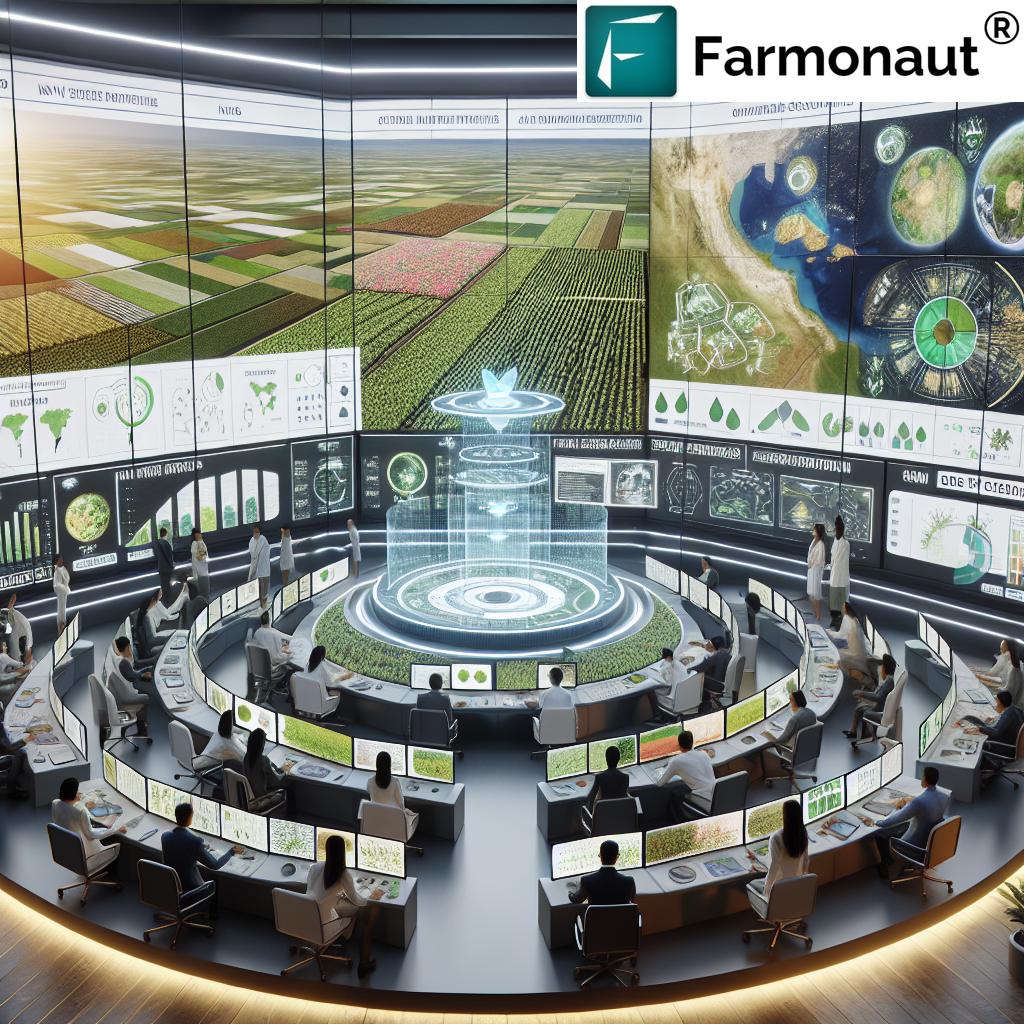
Sustainable Farming Practices Comparison
| Agricultural Aspect | Traditional Method | Sustainable Practice | Environmental Impact | Economic Benefits | Adoption Rate in Australia (%) |
|---|---|---|---|---|---|
| Irrigation | Flood irrigation | Drip irrigation | Reduced water usage and runoff | Lower water costs, improved yields | 65 |
| Fertilizer Use | Blanket application | Precision application | Reduced nutrient runoff | Lower input costs, improved soil health | 55 |
| Crop Rotation | Monoculture | Diverse rotation | Improved soil health, reduced pest pressure | Increased yield stability, reduced input costs | 70 |
| Pest Management | Chemical-heavy approach | Integrated Pest Management (IPM) | Reduced chemical use, increased biodiversity | Lower pesticide costs, premium produce prices | 60 |
| Livestock Management | Continuous grazing | Rotational grazing | Improved pasture health, reduced erosion | Increased stocking rates, better animal health | 50 |
| Energy Consumption | Fossil fuel-dependent | Renewable energy integration | Reduced carbon emissions | Lower energy costs, potential carbon credits | 40 |
The Future of Australian Agriculture: Trends and Predictions
As we look to the future, several key trends are shaping the landscape of Australian agriculture:
Climate-Smart Agriculture
With climate change posing significant challenges, farmers are adopting practices that are both adaptive and mitigative:
- Drought-Resistant Crops: Developing and planting varieties that can thrive in water-scarce conditions
- Carbon Farming: Implementing practices that sequester carbon in soil and vegetation
- Renewable Energy: Integrating solar and wind power into farm operations
Vertical and Urban Farming
As urbanization continues, new forms of agriculture are emerging:
- Vertical Farms: High-tech, multi-story facilities producing crops in controlled environments
- Rooftop Gardens: Utilizing urban spaces to grow fresh produce close to consumers
- Hydroponic Systems: Soil-less growing methods that maximize water efficiency
Biotechnology and Genomics
Advances in biotechnology are opening new possibilities for agriculture:
- Gene Editing: Developing crops with enhanced traits such as disease resistance
- Microbial Engineering: Harnessing beneficial microorganisms to improve soil health and plant growth
- Precision Breeding: Using genomic data to accelerate traditional breeding programs
At Farmonaut, we’re committed to staying at the forefront of these trends, continually updating our satellite-based monitoring and analytics to support the evolving needs of Australian farmers.
Conclusion: Embracing the Agricultural Revolution
As we’ve explored throughout this guide, Australian agriculture is undergoing a remarkable transformation. From precision farming techniques to sustainable practices and digital innovations, the industry is evolving to meet the challenges of the 21st century.
For rural property investors, this revolution presents exciting opportunities. By leveraging technologies like Farmonaut’s satellite-based crop monitoring and embracing sustainable farming practices, investors can maximize returns while contributing to a more resilient and environmentally friendly agricultural sector.
The future of Australian agriculture is bright, driven by innovation, sustainability, and a deep commitment to feeding the world. As we move forward, the integration of technology, sustainable practices, and traditional farming wisdom will be key to unlocking the full potential of our agricultural lands.
At Farmonaut, we’re proud to be part of this agricultural revolution, providing farmers and investors with the tools and insights they need to thrive in this dynamic landscape. Together, we can build a more sustainable, productive, and prosperous future for Australian agriculture.
FAQ Section
Q: How can satellite-based crop monitoring benefit Australian farmers?
A: Satellite-based crop monitoring, like that offered by Farmonaut, provides real-time insights into crop health, soil moisture, and potential issues. This allows farmers to make data-driven decisions, optimize resource use, and respond quickly to changing conditions, ultimately improving yields and sustainability.
Q: What are the key sustainable farming practices being adopted in Australia?
A: Key sustainable practices include precision agriculture, water-efficient irrigation systems, integrated pest management, crop rotation, and carbon farming. These practices help conserve resources, improve soil health, and reduce environmental impact while maintaining or improving productivity.
Q: How is digital technology changing Australian agriculture?
A: Digital technology is revolutionizing agriculture through innovations like IoT sensors, big data analytics, AI-driven decision support systems, and automation. These technologies are helping farmers optimize operations, reduce costs, and make more informed management decisions.
Q: What should rural property investors consider when looking at agricultural investments in Australia?
A: Investors should consider factors such as water security, soil quality, climate resilience, infrastructure, and the potential for implementing sustainable and precision farming practices. Additionally, understanding market trends, commodity prices, and the potential for value-adding through technology adoption is crucial.
Q: How is Farmonaut contributing to the future of Australian agriculture?
A: Farmonaut is providing farmers with advanced satellite-based crop monitoring solutions, making precision agriculture more accessible and affordable. Our technology helps farmers optimize resource use, improve crop health, and make data-driven decisions, contributing to more sustainable and productive farming practices across Australia.
For more information on how Farmonaut can help revolutionize your farming practices, visit our web app or check out our API for developers. Explore our API Developer Docs to integrate our powerful satellite and weather data into your own systems.



